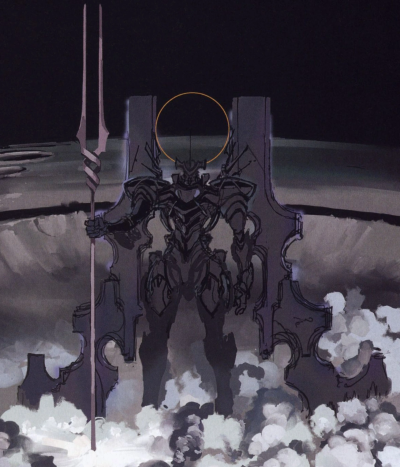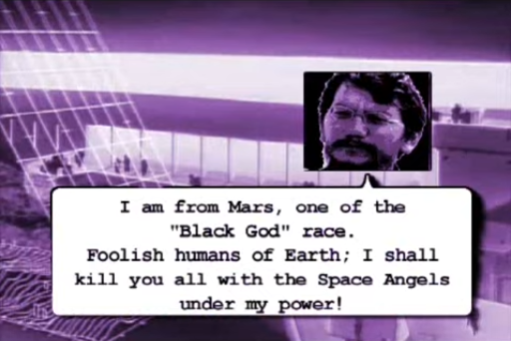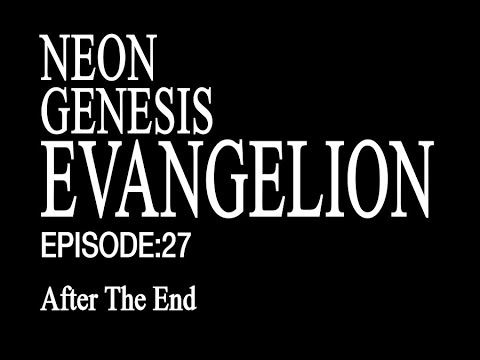
Wait.
Wait.
WAIT!

IT WAS A JOKE!!!
It was supposed to be a joke about the sort of idiotic enemy a studio would foist upon the production staff if they forced a second season of NGE! You weren’t supposed to actually do it! NOOOOOOOOOOOOO!!!


Wait.
Wait.
WAIT!

IT WAS A JOKE!!!
It was supposed to be a joke about the sort of idiotic enemy a studio would foist upon the production staff if they forced a second season of NGE! You weren’t supposed to actually do it! NOOOOOOOOOOOOO!!!
Super-deformed parodies of popular anime IPs are nothing new. Indeed, they’re actually quite common. As to the question of why, my personal theory is that it’s a great way to sell even more merch and media, while also weaning a younger audience on an IP that they might be too tottish to take in till they’re older. I know that when I was a wain, I was far too young to be watching some of the more mature iterations of the Gundam franchise (and to be quite frank, I wasn’t all that interested). But the lighthearted and goofy antics of SD Gundam Force appealed to me greatly, and made me curious to check out other Gundam shows.
As such, it made perfect sense for Evangelion to get its own super-deformed parody show, given how popular and iconic it is. And given my own experience with SD Gundam, alongside the stills of Petit Eva that I’d seen before diving in, I had a general idea that I was in for a fun, lighthearted romp. I mean, what else could the show be?
Okay, so…
Originally, this article was supposed to cover the video game adaptations of NGE. It made sense as a next step, since SEGA helped bankroll the original anime’s production on the condition that it had first dibs on the game rights to the Evangelion IP, and the first video game (also the first spinoff) of the series, Neon Genesis Evangelion: First Impression, came out in the middle of the show’s broadcast.
There’s just one problem: the game isn’t available in English. In fact, most of the Eva games are not available in English. I was able to find the two Girlfriend of Steel games and the Shinji Ikari Raising Project in English, but even with that small sample size I discovered an issue, namely that video games are a much greater time investment than shows or books. Yes, I know, that should have been obvious to me, but I am, alas, not a gamer, and I quickly realized that even investing time in these three games would cause the gap between my third and fourth articles in this series to swell like the Ultimate Warrior, unless I half-assed it and shat out a review of games I barely touched.
Should have worked. Didn’t.
Wait, you want me to go into more detail? Okay, okay, fine.

Evangelion: After the End is an audio drama made shortly after the end of the original NGE tv show, wherein after the massive success of the show’s finale, NGE is suddenly granted a second season, which leaves the characters struggling to come up with an appropriate plot. It’s something of a footnote in the larger history of Eva. I didn’t discover it until I was midway through my article on the other Eva manga (coming soon), and even after learning of it, my main thought was “Huh. This looks interesting. No way in hell it’s available in English though.”
But I was wrong! As luck or fate would have in its way, a fan-translation has been available since the early 2000s, and is readily viewable on Youtube in three parts. So, despite it not being part of my initial retrospective plans, I figured After the End was worth taking a slight detour to check out. The synopsis promised fun metatextual humor, and with Hideaki Anno writing (and guest-starring), surely his creative vision would steer the story in a satisfying direction, right?
Well, one would think.
The popular image of a creator is that of Howard Roark, a lone genius who strives against those who would stifle or misinterpret his creative vision, such as fatuous editors who demand cuts or snobbish critics who only say mean things out of envy. And if there are other people involved in the production of Roark’s work, they are merely puppets carrying out his vision, their own talent judged by how much they dilute or distill the creator’s genius.
This is, of course, nonsense. Even in something like prose fiction, perhaps the least collaborative media, there are still publishers, proof-readers, and other people who help the writer come up with the final story we see on the page. And as for something like filmmaking, there are so many different moving parts in the process that it’s impossible to credit the final product to any single person, even if the screenwriter or director help steer the ship in a cohesive direction.
This is also to say nothing of how stories and art survive, not by being told, but by being retold and reworked with each passing generation. This is why the griots scoff at the idea of books, and why even the biggest King Arthur fan won’t defend the notion that the Icelanders are a slave race fit only to lick their English masters’ boots (even though that’s very much a part of early Arthurian stories). Even within the same generation, adaptations from one medium to another often involve different creators with different perspectives on the subject matter. That’s why Jack Torrence goes from a sympathetic character to a more villainous one in the film adaptation of The Shining. That’s why people fondly remember M.A.S.H. as a heartfelt tv drama and not a wildly sexist book. And that’s why I’m interested in checking out the manga version of Neon Genesis Evangelion.
Powered by WordPress & Theme by Anders Norén